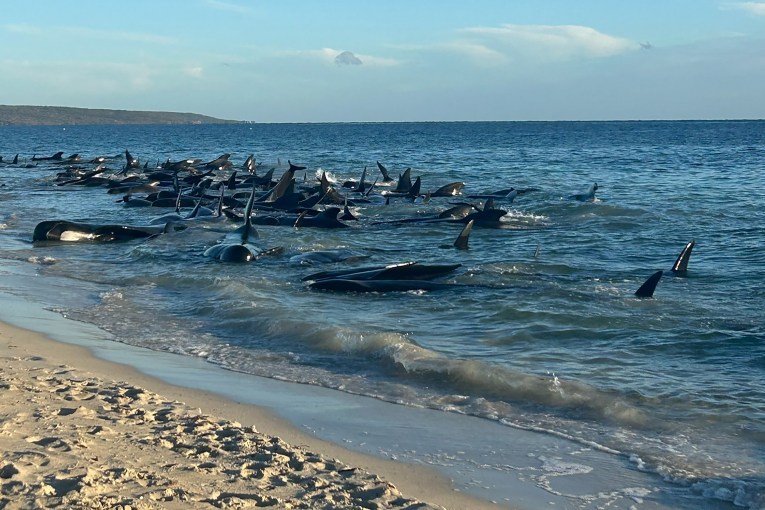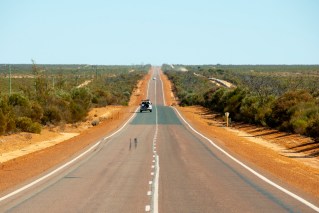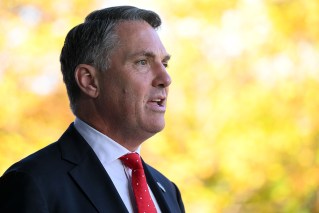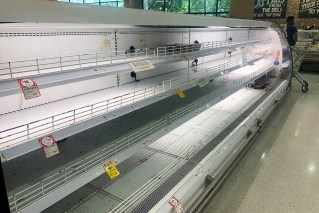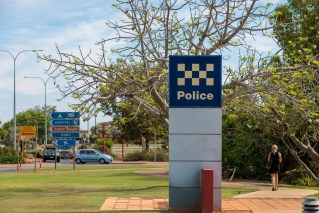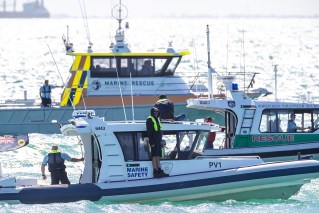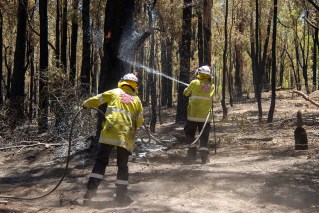No end in sight for Australia’s longest-running gold rush on Kalgoorlie-Boulder’s Golden Mile
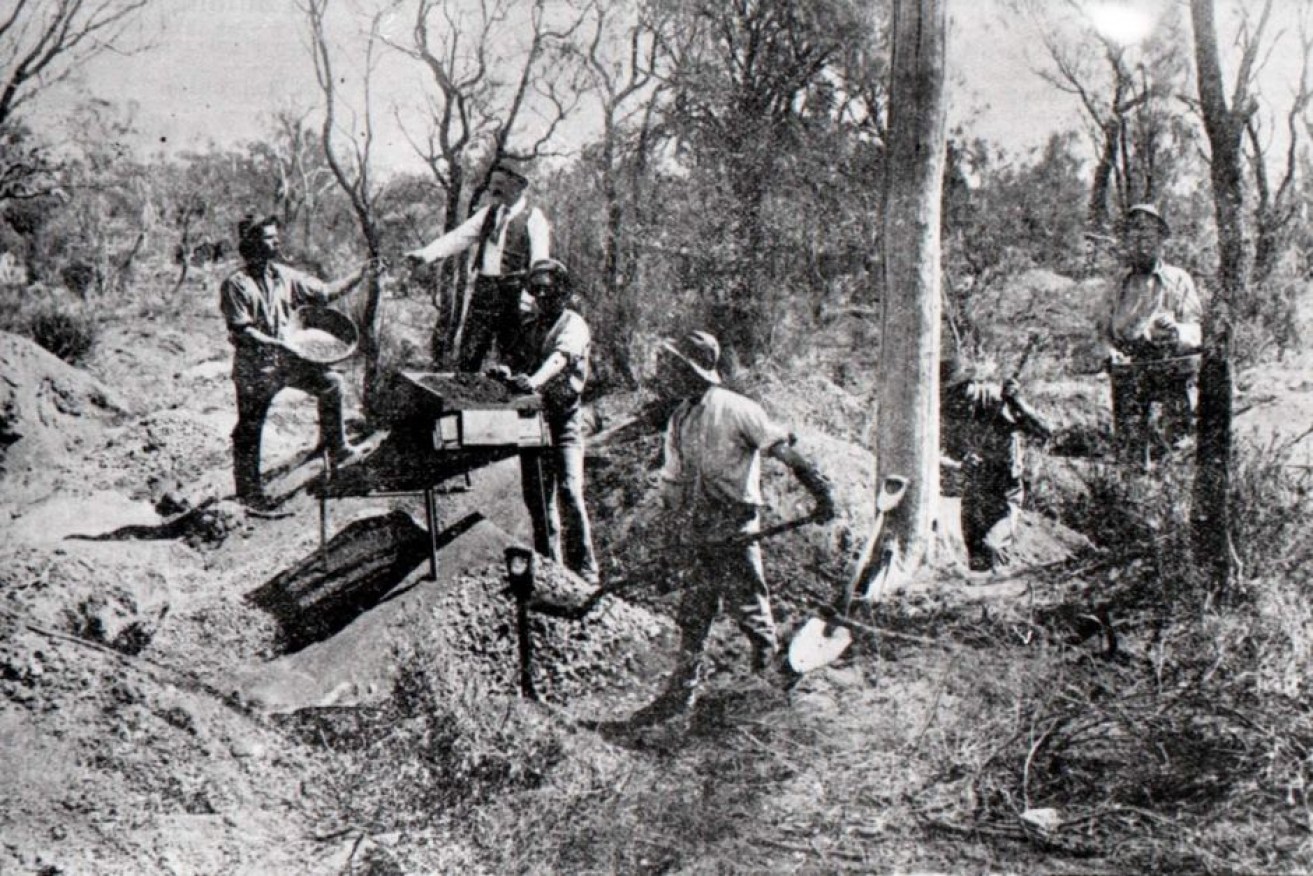
The Golden Mile, pictured in 1895, was known as the richest square mile on Earth. Photo: Eastern Goldfields Historical Society
Two prospectors in 1893 thought they had discovered something special when they found a small patch of ground in outback Western Australia, and today it remains one of the world’s richest gold deposits.
Kalgoorlie-Boulder, 600 kilometres east of Perth, is famous for the Golden Mile that sparked the greatest gold rush Australia has seen, and it celebrates its 125th birthday this week.
Once considered the richest square mile on Earth, the Golden Mile has produced more than 60 million ounces of gold — and counting.
At today’s gold price of about $1650 an ounce, that is the equivalent of about $100 billion worth of the precious metal.

Samuel Pearce and William Brookman are credited with the discovery of the Golden Mile. Photo: Eastern Goldfields Historical Society
This week marks 125 years since prospectors William Brookman and Samuel Pearce registered the Great Boulder lease, which has now been swallowed up by the Super Pit, Australia’s most famous gold mine.
Their find brought thousands more people to the Kalgoorlie gold rush, less than three months after prospectors Paddy Hannan, Thomas Flanagan and Dan Shea kicked it off with their discovery at Mount Charlotte a few miles away.
Today’s seven-hour drive from Perth to Kalgoorlie-Boulder took about five weeks in the early days of the rush, but there was no shortage of people willing to make the trip.

The Great Boulder mine in 1896. Photo: Eastern Goldfields Historical Society/Greenham and Evans
Globally significant find put town on the map
Eastern Goldfields Historical Society president Scott Wilson said the Golden Mile discovery remained significant on a global scale.
The World Gold Council ranks it fifth on a list of the world’s most productive gold districts.
“It’s phenomenal really when you think of what it started, what it created by its gold production. It really did put Kalgoorlie on the map,” he said.

The first shaft being built on the Ivanhoe gold mine on the Golden Mile in 1894. Photo: JJ Dwyer/Eastern Goldfields Historical Society
“Paddy Hannan and his mates did very well to find the gold up at Kalgoorlie, but it was really what happened at this point onwards that made Kalgoorlie-Boulder famous throughout the world.
“There are lots of rich gold mines throughout the world, but the thing we have here in Kalgoorlie is the geological formation is so condensed in one area.”
Mr Brookman and Mr Pearce were acting for a South Australian syndicate, and it was Mr Brookman who rode into the nearby town of Coolgardie to register the Great Boulder lease on August 30, 1893.
During the remainder of 1893, the pair went on to peg and register a total of 19 leases.

Samuel Pearce was inducted into Kalgoorlie-Boulder’s Walk of Fame last year and his great-great granddaughter Rosemary Morgan attended. Photo: ABC Goldfields-Esperance
‘Golden Mile’ took time to develop
The term Golden Mile became popular around 1899 and was originally used to describe the mines on the Ivanhoe, Great Boulder, Golden Horseshoe, Chaffers, Hannan’s Star and Boulder Main Reef leases.
Locals referred to it simply as “the Mile” and it is often used to describe the entire group of leases that make up the Super Pit today.

The original mining tenements pegged on the Golden Mile alongside a bird’s eye view of the Super Pit. Photo: Eastern Goldfields Historical Society
“It evolved rather slowly. It wasn’t a big, fantastic amount of gold sticking up out of the ground where prospectors could chop the gold off with tomahawks, so to speak,” Mr Wilson said.
“This was a very methodical, very wide lode formation, so they knew it was there and very rich and very big tonnages, but it did take time to develop.
“As each of these mines became extended outwards, they followed it out to the north, east, west.
“There was literally gold all over the place. It became known as the Boulder belt, but it took time before someone first coined the Golden Mile.
“Today we refer to the whole of the Super Pit pretty much as the Golden Mile, but anyone who looks at a map will know it’s more like the golden three or four miles.”

Miners underground in the Great Boulder mine in 1898. Photo: JJ Dwyer/Eastern Goldfields Historical Society
Gold rush changed the face of Australia
Melbourne-based gold analyst Sandra Close, managing director of Surbiton Associates, said the population explosion after the discovery changed the face of Australia.
“The original discovery was highly significant because it built a large gold industry in the Kalgoorlie-Boulder area,” she said.
“This led to a substantial second gold boom in Australia in the 1890s and early 1900s.
“This all happened around the time of Federation when it was questionable whether Western Australia would join the rest of the colonies to form the Commonwealth.
“The miners coming from the eastern states had a significant effect on Western Australia joining with the other colonies.”

There were no injuries when two rock falls occurred within 24 hours at the Super Pit in May. Photo: ABC Goldfields-Esperance
Alan Bond vision a game-changer for Super Pit
One-third of the gold produced from the Golden Mile — just over 20 million ounces — has come from the Super Pit.
The architect of the Super Pit was the late businessman Alan Bond, who bought up all the mining leases in the 1980s and transformed the vast underground workings into one enormous open pit.

Alan Bond in 1980. Photo: National Library of Australia
A century of mining on the Golden Mile left more than 3500 kilometres of historical underground tunnels and shafts — about the equivalent of driving from Perth to Sydney — extending more than 1200 metres below the surface.
Some of those historic workings contributed to two separate rock falls at the Super Pit earlier this year, when more than one million tonnes of rock slipped down the eastern wall of the mine.
Super Pit operator Kalgoorlie Consolidated Gold Mines, which employs about 1100 workers and contractors, subsequently announced 30 redundancies in June because of lower mining rates.
In July, the WA Environmental Protection Authority recommended approval for proposed extensions to the south-west and northern ends of the Super Pit.
The cutbacks are expected to prolong the life of the mine by five years to 2026, while extending the processing life until at least 2034.

Kalgoorlie-Boulder Mayor John Bowler speaks at the unveiling of a sign to commemorate the 125th anniversary of the Golden Mile. Photo: ABC Goldfields-Esperance
Mayor upbeat on future for Golden Mile
Since the rock falls, Kalgoorlie-Boulder Mayor John Bowler has had ongoing briefings with KCGM, which is owned on a 50-50 basis by Canadian mining giant Barrick Gold and US miner Newmont Mining.
Mr Bowler, who described Mr Brookman and Mr Pearce as “heroes”, remains upbeat about the mine’s future despite the setback.
“I’m sure we’ll be here mining for at least another 25 years,” he said.
“I’m not sure about the Super Pit … the rock fall has put a bit of a dampener on it, but I’m sure mining will go underground again in the future and this place will retain its title as the richest square mile on Earth.”
Another Super Pit would be worth $100 billion
Bob Fagan, vice-president of the Eastern Goldfields Prospectors Association and a former lecturer at the WA School of Mines, put the scale of the Golden Mile into perspective.
“That single deposit, basically, if we look at all the gold that has been mined in the past and the inventory still to be mined, it comes to about 2000 tonnes of metal,” he said.
“That’s about the size of a standard suburban passenger bus if you melted it down.
“A tonne of gold, which is not very large in size, is worth about $50 million at today’s prices.
“If we found another Super Pit today it would be a $100 billion deposit. That gives you an idea of the magnitude.”

Kalgoorlie-Boulder’s Super Pit poured its 20 millionth ounce of gold last year. Photo: KCGM
While the public is largely kept in the dark about exploration results, there has been ongoing deep drilling at the southern end of the mine.
Dr Fagan said it was hard to estimate how long mining would continue at the Super Pit because of commodity price cycles.
“There’s probably only enough proven reserves to mine for another 10 years or so, because proving up reserves beyond that is mostly academic and an expensive exercise for mining companies,” he said.
“These days it’s getting harder and deeper to mine.”
–ABC
